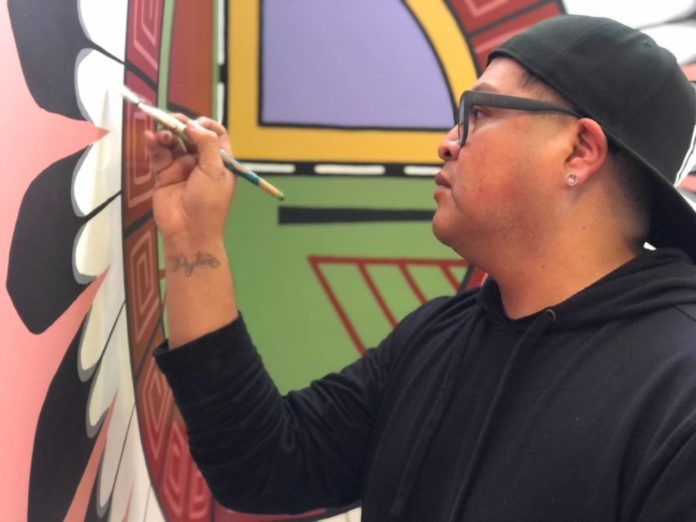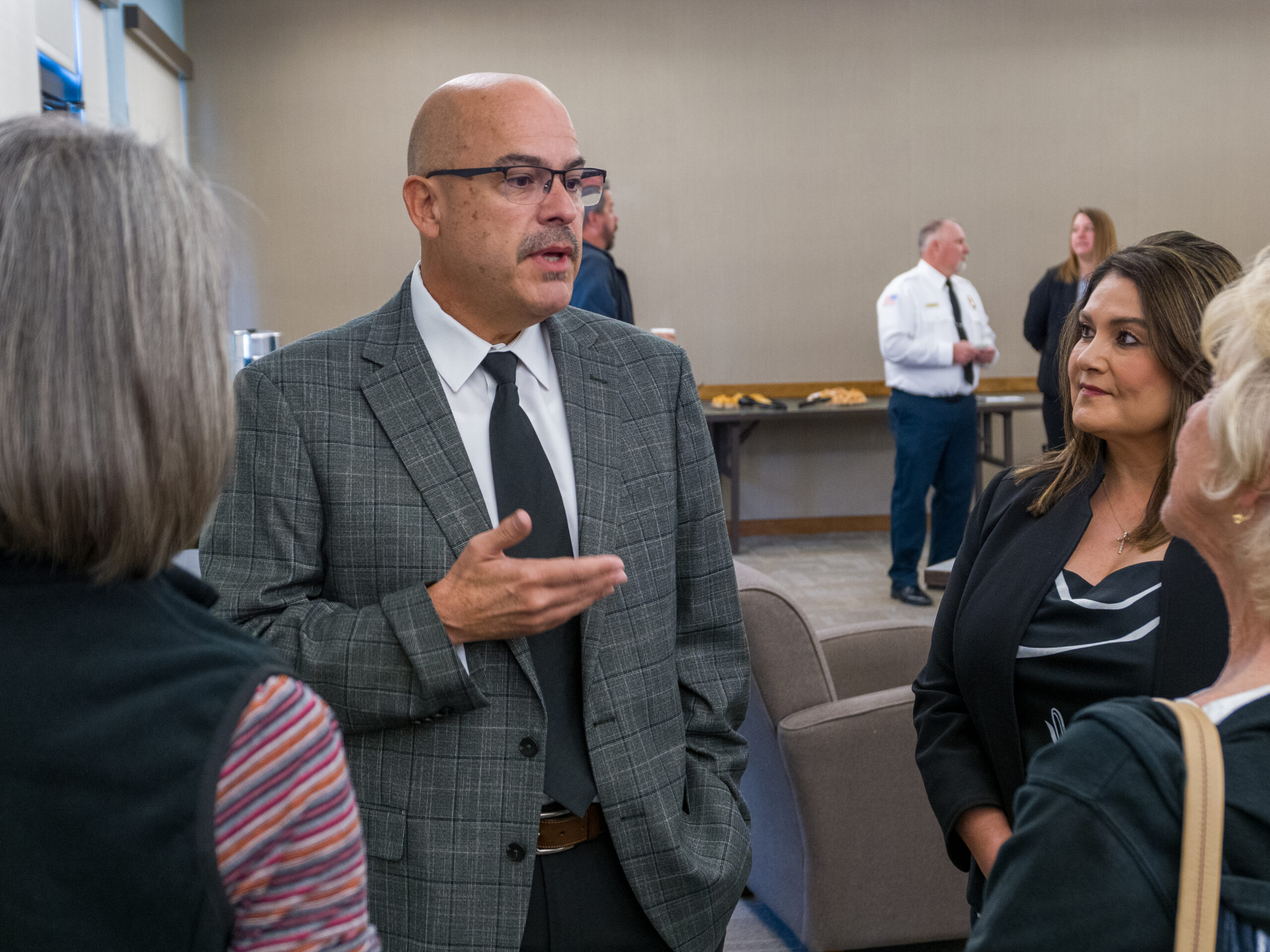Duane Koyawena began his art career in Albuquerque, N.M., where he had very little connection to his Hopi roots. That all changed when he moved to Arizona and discovered his passion for Hopi art.
“I didn’t really know a lot about my Hopi culture, and I didn’t really have a desire to learn it when I was in the city.”
When Koyawena began visiting his ancestral lands more and more, he started using his artistic skills to learn the traditions and techniques implemented by the Hopi.
Now, Koyawena is a respected artist in the Hopi art community.Most recently, he was commissioned to paint a mural for the newly opened Verde Valley Archaeology Center’s new lobby. The mural features traditional Hopidesigns and colors.
“As I started painting these things I wanted to know the meaning behind certain things … Why is that color here or there — there’s the meaning behind all of it,” Koyawena said. “For us as Hopi, we have pretty significant symbols and things about our culture that are very distinctive, and you can tell if a Hopi did it.”
Koyawena continues to broaden his knowledge and skillsets, traveling from his home in Flagstaff to the Hopi reservation as often as he can.
“One thing that’s really helped me is getting into farming and Hopi life… so now I have a field in Hopi that I tend to,” Koyawena said. “I really want to be part of it. For me, for my sake, if I say I’m a Hopi artist, I have to contribute and be part of the culture. I can’t be a Hopi artist and disconnected from that.”
Koyawena said that some of the authentic traditions in Hopi art are in danger of being forgotten.
“The elders now may have hard times remembering how it was because it’s not written or recorded,” Koyawena said. “So stuff gets a little modified here and there. That’s just the evolution of how it worked out and it’s unfortunate, but it’s where we’re at today … I really wanted to be one who knew what we were talking about and expressing it correctly and not misinterpreting the meaning of something.”
Sticking to authentic traditional styles doesn’t stop Koyawena from melding his art with the modern scene. Partnerships ranging from mountain bike glove designs, customized prosthetic limbs and even a fully functional R2-D2 droid from “StarWars” painted in Hopi style are part of Koyawena’s repertoire of artistic collaborations.
Koyawena’s knowledge of Hopi traditions stems from his ability to ask questions and interact in the community with humility.
“One of the hardest things for me was being able to find that humility and being able to say: ‘What is this, what is that?’” Koyawena said. “Now, I’ve been able to work that and live that, and I’ve gathered quite a bit of knowledge and information for myself to where I can express my work and share it with whoever wants to ask me about what I’ve created.”
Koyawena loves teaching and sharing ideas with others.
“When I go speak, I talk about giving inspiration, of course, to people who paint but also anybody who has any type of talent, whether it’s writing or singing or instruments or whatever,” Koyawena said. “Being able to build once you get to that point — hopefully, giving that whole inspiration of being able to persevere through those hard times.”
In the future, Koyawena said he hopes to keep sharing who he is as an artist by creating Hopi art in a way that is accurate and respectful to the traditions of the tribe.
“We’re starting to get out of the idea of ‘let’s put the natives in this corner and leave them there,’” he said.
Soon, Koyawena said he may be part of a possible mural project in New York, and he hopes to bring hope art to an international stage one day by doing projects worldwide.



